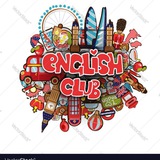🔰 Advanced Structure
♻️ No sooner … than
🔎 "No sooner" is used to show that one thing happens immediately after another thing. It is often used with the past perfect, and usually followed by "than".
- No sooner had I arrived at the station than the train came. (= I came first and the train arrived right after me.)
- No sooner had I eaten the fish, than I started feeling sick. (= As soon as I ate the fish, I started feeling sick.)
- No sooner had they completed the work, than they demanded the wages. (= After they completed the work, they demanded the wages.)
@best_eng_club
♻️ No sooner … than
🔎 "No sooner" is used to show that one thing happens immediately after another thing. It is often used with the past perfect, and usually followed by "than".
- No sooner had I arrived at the station than the train came. (= I came first and the train arrived right after me.)
- No sooner had I eaten the fish, than I started feeling sick. (= As soon as I ate the fish, I started feeling sick.)
- No sooner had they completed the work, than they demanded the wages. (= After they completed the work, they demanded the wages.)
@best_eng_club
Everyday Idiom
Keep a low profile 🦥
[To avoid attracting attention to yourself]
- He has been in a little trouble recently so he is trying to keep a low profile.
- I cannot go to the party, I am just keeping a low profile so I can finish my research by the deadline.
#idiom
@best_eng_club
Keep a low profile 🦥
[To avoid attracting attention to yourself]
- He has been in a little trouble recently so he is trying to keep a low profile.
- I cannot go to the party, I am just keeping a low profile so I can finish my research by the deadline.
#idiom
@best_eng_club
Media is too big
VIEW IN TELEGRAM
IELTS Reading question types in 40minutes
✅ 00:48 Multiple Choice
✅ 04:11 True/False/Not Given
✅ 06:41 Sentence Completion
✅ 09:15 Summary Completion
✅ 13:40 Match Sentence Endings
✅ 17:35 Short Answer
✅ 21:38 Yes/No/Not Given
✅ 25:40 Match Headings
✅ 32:16 Match Information
✅ 35:21 Match Features
#IELTS
#reading
@best_eng_club
✅ 00:48 Multiple Choice
✅ 04:11 True/False/Not Given
✅ 06:41 Sentence Completion
✅ 09:15 Summary Completion
✅ 13:40 Match Sentence Endings
✅ 17:35 Short Answer
✅ 21:38 Yes/No/Not Given
✅ 25:40 Match Headings
✅ 32:16 Match Information
✅ 35:21 Match Features
#IELTS
#reading
@best_eng_club
Media is too big
VIEW IN TELEGRAM
IELTS Simon👨💼: Speaking
Lesson 8: Part 2 - "describe your favorites"
✅ How to talk about your favorites and some vocabulary for specific topics
#speaking
@best_eng_club #simon
Worksheet 👇
Lesson 8: Part 2 - "describe your favorites"
✅ How to talk about your favorites and some vocabulary for specific topics
#speaking
@best_eng_club #simon
Worksheet 👇
⏳ 1-minute preparation tips for part 2
1️⃣ A simple list is probably faster and easier than a diagram or mind map.
2️⃣ You need to decide on your topic as quickly as possible. Then spend most of your time making notes.
3️⃣ Try to write at least one key idea for each part of the question.
4️⃣ Don't write sentences, and don't waste time erasing "mistakes".
5️⃣ Try to use a topic you have already prepared.
6️⃣ Forget about grammar. Focus on answering the question.
- Simon
@best_eng_club
1️⃣ A simple list is probably faster and easier than a diagram or mind map.
2️⃣ You need to decide on your topic as quickly as possible. Then spend most of your time making notes.
3️⃣ Try to write at least one key idea for each part of the question.
4️⃣ Don't write sentences, and don't waste time erasing "mistakes".
5️⃣ Try to use a topic you have already prepared.
6️⃣ Forget about grammar. Focus on answering the question.
- Simon
@best_eng_club
